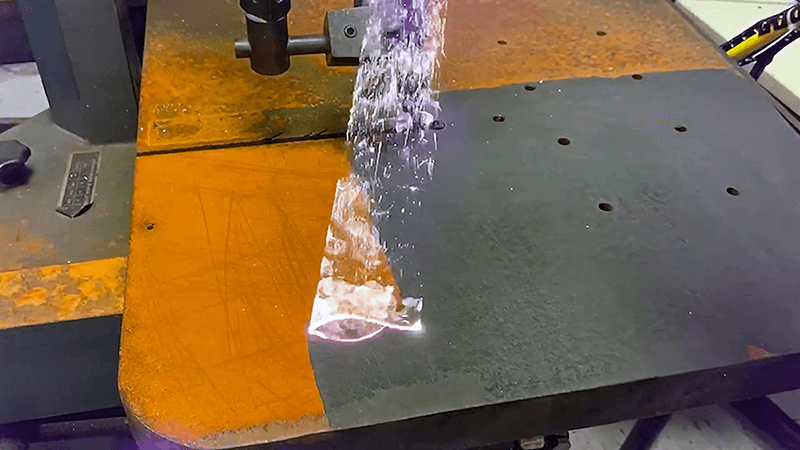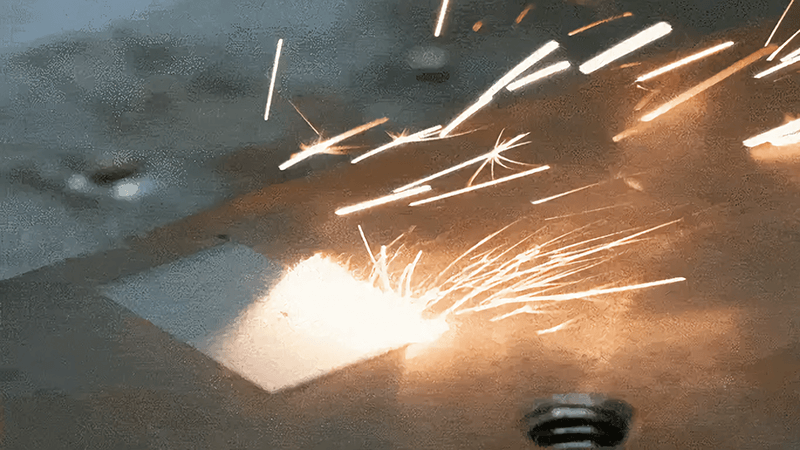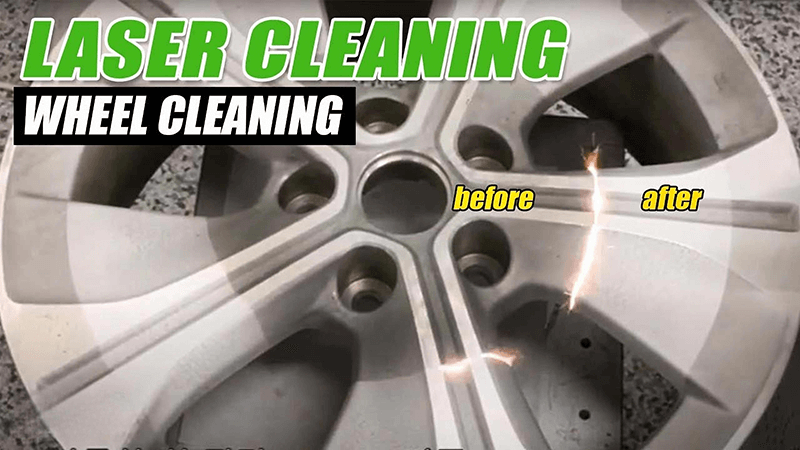Laser cleaning often sounds too good to be true. Many people worry if it is strong enough to remove stubborn rust or if it will damage the base material. Others are tired of chemicals, dust, or grinding wheels but still doubt new methods.
Laser cleaning is a non-contact, eco-friendly method that removes rust, paint, coatings, and other contaminants using a focused laser beam, without damaging the underlying surface.
Laser cleaning is changing the way industries prepare surfaces. Unlike sandblasting or chemical washing, it is fast, safe, and precise. But to know if it is right for you, we need to answer the common questions that buyers and engineers ask.

Does laser cleaning really work?
Laser cleaning machines are often seen as futuristic tools. Some people think they are only for high-tech labs, not factories. Others expect miracles but forget that results depend on the right settings and applications.
Yes, laser cleaning really works. It removes rust, paint, oil, and other contaminants with high precision. The effectiveness depends on the laser’s wavelength, power density, and scanning speed, which must be adjusted for the specific material and contamination type.
Why it works in practice
I see a laser cleaning machine1 as a focused light tool that ablates unwanted layers. The light energy lifts contaminants without touching the base metal. This means no abrasion and no extra residue. For example, one of my clients had trouble cleaning steel molds with chemicals. It was slow and messy. When they switched to our Kirin Laser machine, they cut prep time in half. They also eliminated solvents, which saved costs and made the workshop safer.
Key benefits in real-world use
| Benefit | Explanation |
|---|---|
| No physical contact | No grinding or sandblasting, so no base material wear |
| Chemical-free | Eliminates solvents, avoids toxic waste |
| Precision control | Adjust settings to remove only the unwanted layer |
| Faster processing | Reduces preparation time for molds, tools, and production lines |
This balance of power and control is why laser cleaning works2 not just in theory but in real industrial workflows.

How does the laser cleaning work?
Many people ask what happens when a beam of light touches a rusty surface. Some expect it to burn through everything, others think it might be too weak. The truth is in the science of laser-material interaction.
Laser cleaning works by directing a pulsed laser beam onto the contaminated surface. The beam energy is absorbed by the rust, paint, or dirt, causing rapid heating, expansion, and ablation. The unwanted layer vaporizes or flakes away, while the base material remains intact.
Understanding the mechanism
The laser beam interacts differently with contaminants compared to the base material. Contaminants usually absorb more energy at specific wavelengths. This makes them heat up and break away faster. Meanwhile, metals like steel or aluminum reflect part of the energy and remain safe. The key is tuning the wavelength and controlling the pulse duration.
Components that matter
| Component | Role in Cleaning |
|---|---|
| Wavelength3 | Determines absorption efficiency for rust, paint, or oil |
| Power density | Controls how fast the contaminants ablate |
| Pulse duration4 | Short pulses reduce heat spread into the base material |
| Scan speed | Adjusts the balance between speed and surface protection |
By adjusting these settings, I make sure the cleaning is effective without damaging the substrate. This is why I always highlight control when I present our Kirin Laser machines to clients.

What can laser cleaning remove?
Buyers often want to know if laser cleaning can replace every other cleaning method. Some hope it works on all materials and contaminants, while others think it is limited to only rust.
Laser cleaning can remove rust, oxides, paint, coatings, oil, grease, mold release agents, and even thin films of contaminants from metals, plastics, ceramics, and stones. It is versatile across many industries from automotive to aerospace.
Applications across industries
I have seen laser cleaning5 replace chemical baths in mold factories, abrasive blasting in shipyards, and manual grinding in automotive repair shops. In each case, the machine adapts to the type of contaminant. For example, removing rust from steel pipelines requires different settings than stripping paint from aircraft aluminum panels.
Practical categories of removal
| Contaminant type | Example industries | Notes |
|---|---|---|
| Rust and oxides | Shipbuilding, pipelines | Great for corrosion prevention6 |
| Paint and coatings | Automotive, aerospace | Selective removal without damaging base |
| Oil and grease | Mold making, machinery | Clean without solvents |
| Residues and films | Electronics, plastics | Precise and safe for delicate surfaces |
This wide range of applications is why Kirin Laser machines are designed for flexibility. A single machine can serve multiple cleaning tasks, reducing the need for separate systems.

What are the limitations of laser cleaning?
Laser cleaning is powerful, but no solution is perfect. Clients sometimes expect it to remove thick concrete or cut through deep corrosion in one pass. Some fear it will replace every other process, but in reality, each method has its place.
Laser cleaning has limitations. It is less effective on thick layers, very large areas, or non-absorbing transparent coatings. It also requires higher upfront investment compared to traditional methods, and operators must be trained to set correct parameters.
Where it works less effectively
In my experience, laser cleaning struggles with very thick rust or multilayer coatings. It can remove them, but it takes more time and energy. For large structures like entire bridges, blasting might still be faster. Also, transparent coatings that do not absorb laser energy may need pre-treatment.
Challenges to consider
| Limitation | Explanation |
|---|---|
| Thick layers7 | Needs multiple passes, slower process |
| Large surfaces | Less efficient compared to blasting |
| Transparent materials | Laser may pass through without effect |
| Cost | Higher upfront investment, though savings come later |
| Operator training8 | Requires understanding of parameters like power, speed, and wavelength |
These limitations are why I always position laser cleaning as a smart, modern alternative where precision, safety, and long-term savings matter. It is not a universal replacement, but it is the right tool for many industries.

Conclusion
Laser cleaning9 is not a magic trick. It is a controlled, science-based process that uses focused light to remove unwanted layers. It really works when the settings are correct, and it replaces messy and dangerous methods in many industries. From rust removal to paint stripping, it offers precision, safety, and eco-friendly cleaning. While it has some limits, its advantages make it the future of surface preparation for factories, workshops, and industrial users.
-
Discover the benefits of laser cleaning machines and how they can enhance efficiency and safety in industrial applications. ↩
-
Discover how laser cleaning enhances efficiency and safety in industrial settings, offering a non-abrasive, chemical-free solution for various materials. ↩
-
Understanding wavelength is crucial for optimizing laser cleaning efficiency and ensuring effective contaminant removal. ↩
-
Exploring pulse duration can reveal insights into minimizing heat damage while maximizing cleaning effectiveness. ↩
-
Explore the advantages of laser cleaning technology, including efficiency and environmental benefits. ↩
-
Learn about effective corrosion prevention methods and their importance in various industries. ↩
-
Understanding the challenges of thick layers in laser cleaning can help you make informed decisions about its effectiveness. ↩
-
Exploring the importance of operator training can enhance your knowledge of laser cleaning techniques and improve operational efficiency. ↩
-
Finding the best laser cleaning machine and laser cleaning solutions from Kirin Laser, clicking the link to get all your needs. ↩





